Do you have keyboards in your music classroom, but not sure how to use them with students? I’m sharing how and why I teach piano in the elementary music room. Whether you have 3-4, or classroom set, there is such great reasons to incorporate introductory piano skills to your students!
Why teach piano?
The first question you might have is, why teach piano? I already have so much to cover in my curriculum! I get it! But I have found so many benefits to offering an “introductory” or beginner class piano unit! I have yet to meet a student, that when given the chance, does not want to play around on the piano, pick out tunes they know, or share what they learned while at their grandma’s house. (Btw, the song they learned is always Heart & Soul!). So given that my students are drawn to the piano, why would I not give them some piano basics? Here are some of the reasons I teach piano in elementary music:
- It gives them the opportunity to learn how to track and read music
- It helps develop fine motor skills and to use hands independent of one another
- It teaches students how to persevere and work through challenges
- It empowers them to discover or create music that they love
- It helps guide students to additional musical opportunities, such as private lessons
What you need to begin
To start your beginning piano lessons, it is helpful to have these items:
- 3-4 octave keyboards
- Keyboard stand
- Piano bench
- Headphone(s)
- Headphone splitter (if putting 2 students at a keyboard at a time)
- Keyboard Handbook (shows the features of the keyboard, where power button & volume is, how to change sounds on the piano, etc.)
- Small dot stickers
When to begin
I typically offer my beginners piano unit in third grade. My biggest reason has to do with fine motor development. Although I will always have students who are ready earlier, the flip side is that I will always have students who are not ready. I choose to wait so that the majority of my students will be successful with the unit. I also find that by 3rd grade, we’ve transitioned to more student-centered learning, so their ability to work independently or collaboratively with another is greater. Those are the two major factors I consider when choosing when to start piano in my music room.
How to begin
How to begin will depend on several factors:
- The equipment available to you – Do you have 4,12, or a classroom set of pianos?
- Instructional time – Do you want to devote weeks to this unit or touch upon it in a music center setting?
- Instructional goals – Do you want to give them the basics? Reinforce reading music notation? Align with other units, like ukulele or recorder?
Once you’ve answered those questions for yourself, it will serve as a guide as to how to proceed. I have a large room and 15 keyboards available for use. I typically set up 12-14 for student use. Each piano has its own stand and bench, as well as two sets of headphones and a headphone splitter. When I set up the keyboards, I do color code a few keys with small dot stickers. I do this because I am typically teaching 12-14 students at a time (with another group doing composition projects simultaneously). By color coding the keys, students have a physical reference point to refer to when I’m not available to help them.
What we cover
It’s so important to know that I am not teaching piano lessons similar to how a private instructor might do so. In my limited time and resources, I have to prioritize my instructional goals. So what do we learn in beginning piano? We spend time learning about
- Proper hand position
- Middle C
- Treble clef & bass clef
- Tracking notation
- Learning tunes (melody only)
- Learning chord root harmony to accompany those tunes
I purposefully chose not to use a piano method book for this unit because my goals are to introduce lots of skills that can later be followed up with in other units. I created my own Beginner Keyboard Book that aligns with curricular goals and uses tunes that are familiar to my students. I also firmly believe in encouraging students and families to pursue class or private lessons if their child has taken a special interest in the piano.
Our piano unit typically lasts about 6-7 weeks. As I see my students once every 3 days, this means they have about 12 contacts of piano instruction. After each song, a child “shows what they know” and performs for me before going to the next song. This allows me to make corrections, encourage, talk about expressive elements to playing, etc. At the end of the unit, we do a virtual recital where I record each student playing what they consider their best piece. We share the recordings with parents via Google Drive.
Have questions about teaching a piano unit? Want to share an idea about how you’ve incorporated piano instruction in your class? Leave a comment below!

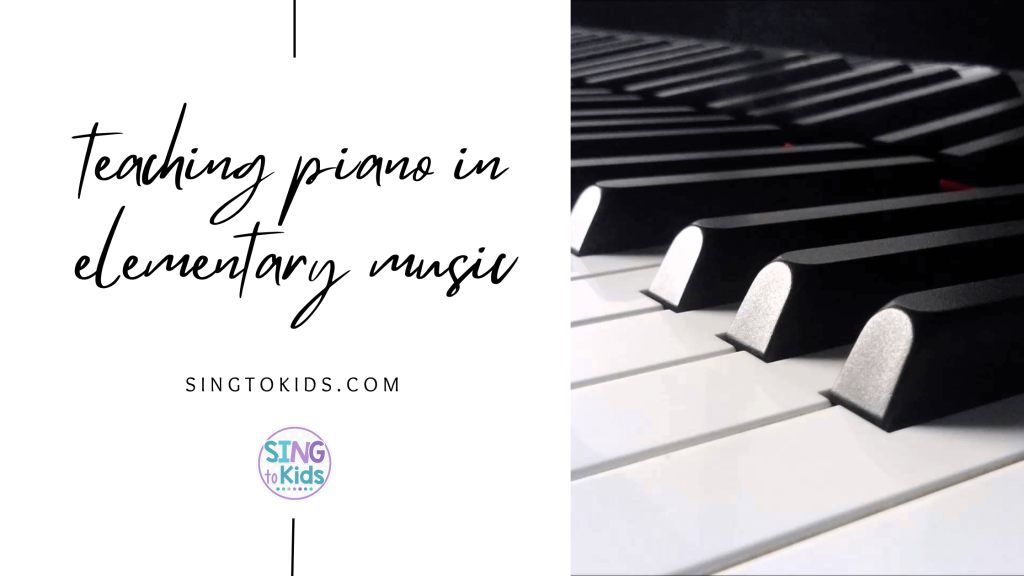
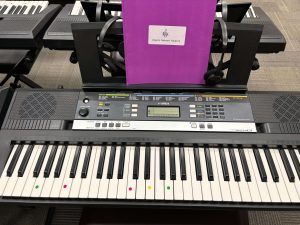
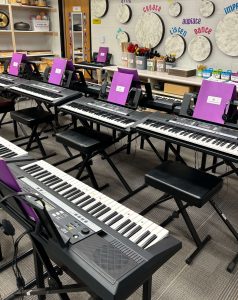
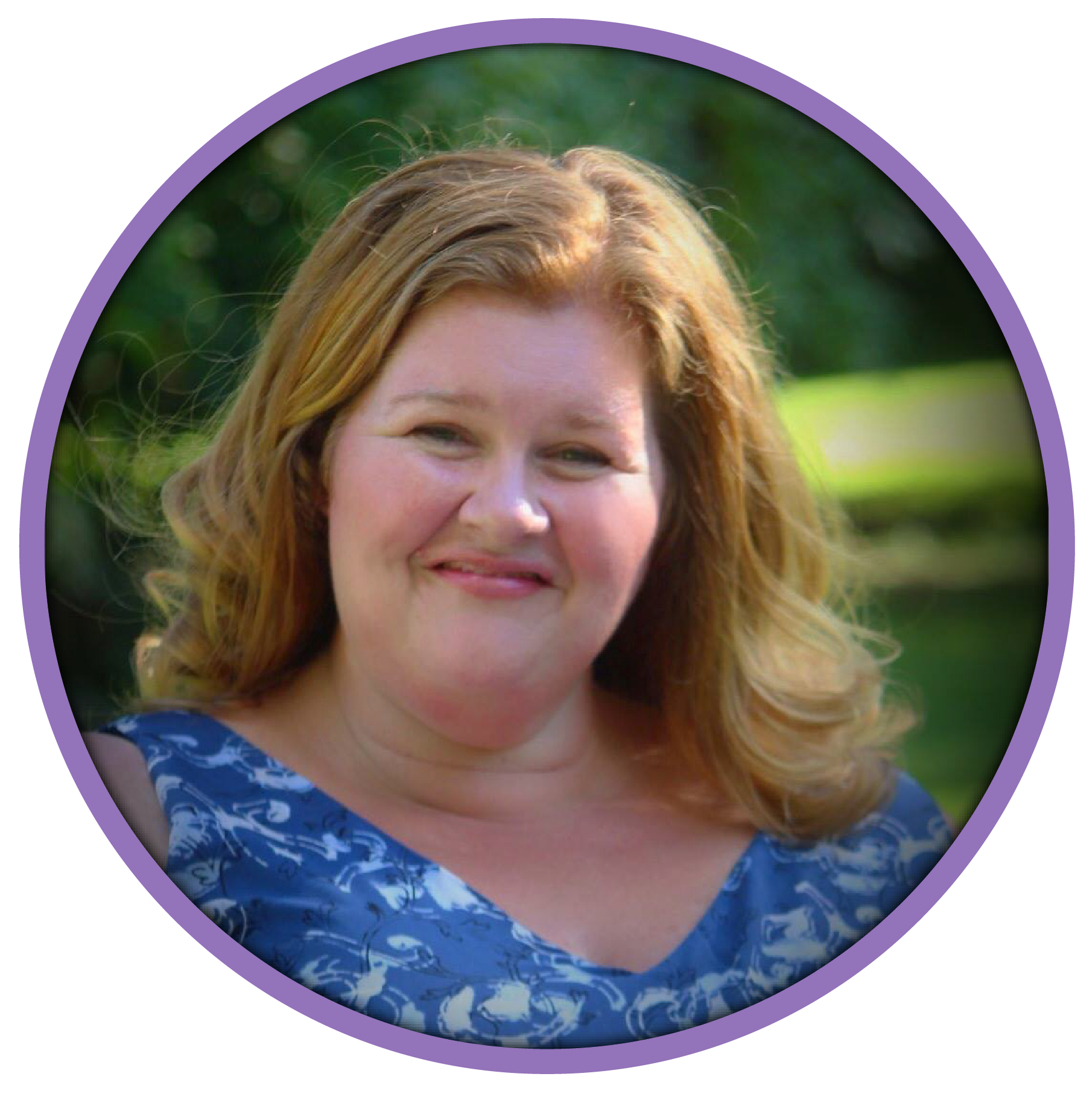
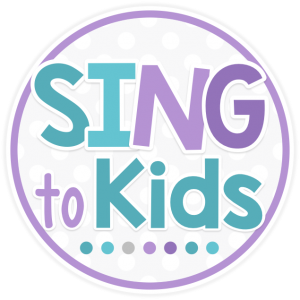
How do you manage set up and break down of keyboards assuming multiple grades with different units share the same music room?
I love this! I have a set of keyboards and we do basically the same thing. I’ll definitely be buying the piano book you listed. I have been looking for something more basic that teaches the same skills you mentioned. Thanks!